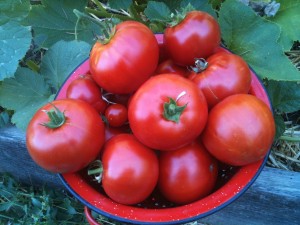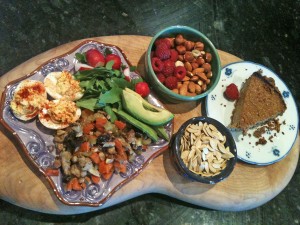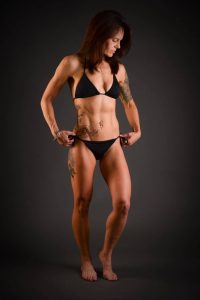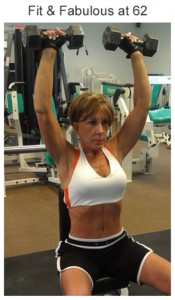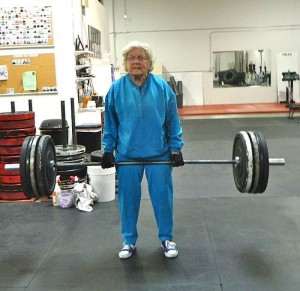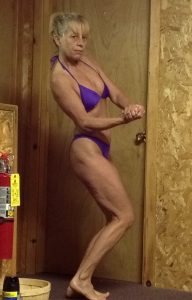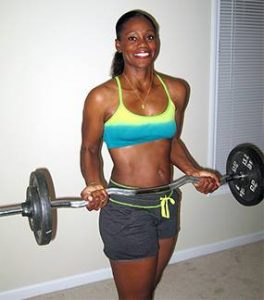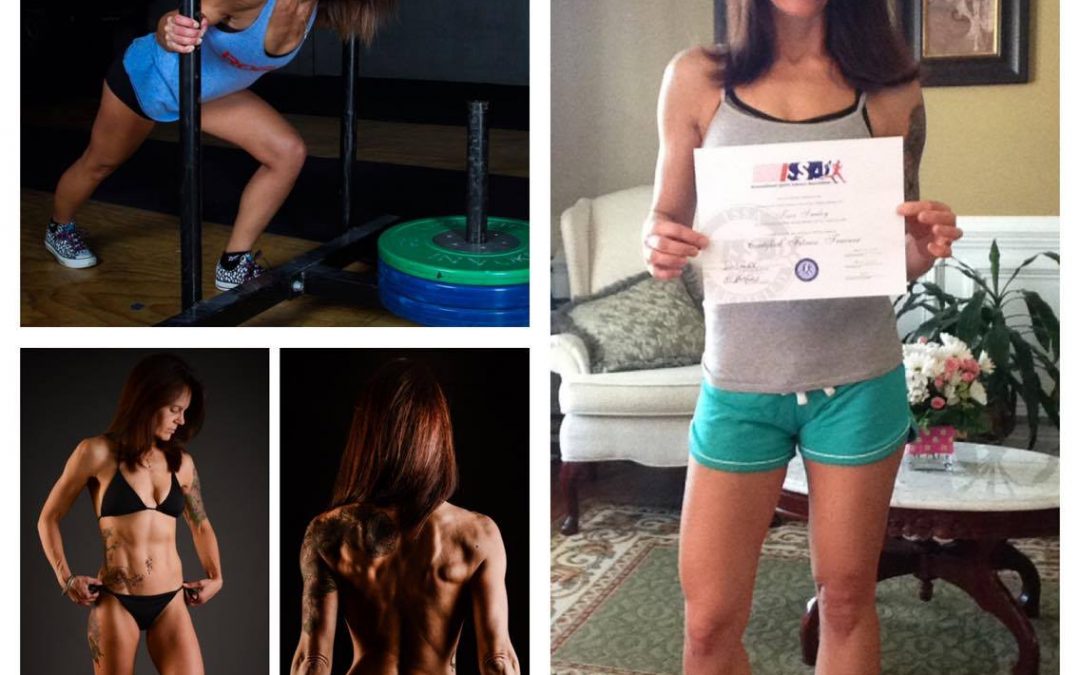
by Fit Women Staff
Hi my name is Tina I just turned 47 in March and I’m a Mom, my boys are 24, 21, & 14.
My fitness journey began about nine years ago when I started working out in my community gym. Even though I’ve never struggled with being “overweight,” I was still self conscious about my body and wanted to lose a few pounds after three children as well as develop some muscle tone after 40+ years of neglect.
So after several years of basically doing the same routine day in and day out w/o much visible physical change, I decided to start running. Within about two months I had lost those stubborn 15 pounds and I felt great! I began a different routine at the gym and continued running and finally started to see those muscles forming! By the mid Fall I completed my very first 5k run, and even participated in a mud run!
But I soon became bored with my routine plus I really wanted to get my husband involved in regular exercise, so….we both decided to try out a Crossfit class.
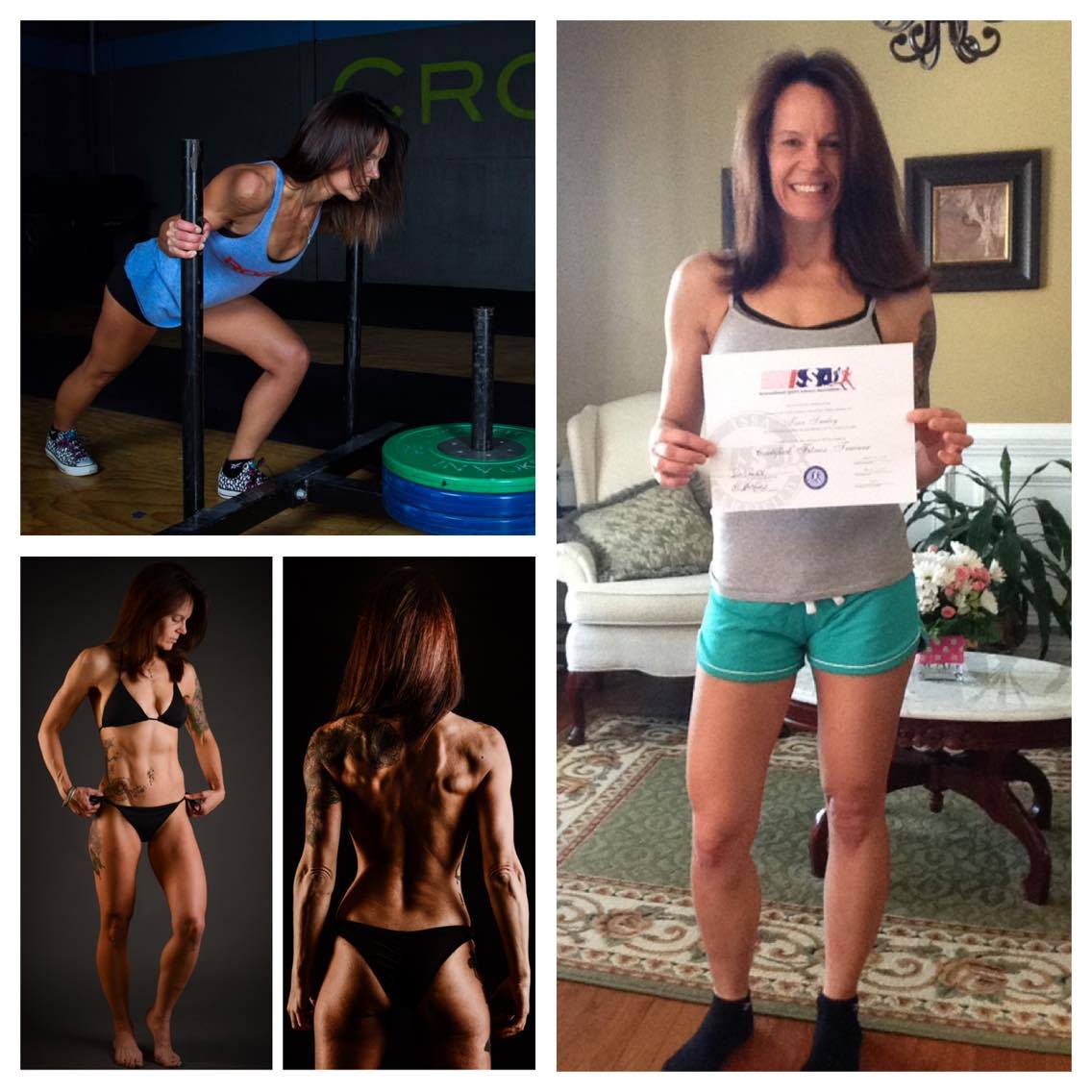
We were surely intimidated at first with all the muscle-bound bodies (both male AND female) working out along side us in the gym, but we became hooked. After only three free Saturday classes, we joined the “box.” (Crossfit lingo for gym)
Crossfit certainly introduced me to things I never imagined myself doing…like box jumps, pull-ups, kettle-bells and of course weight-lifting.
Each day we would do a different WOD (workout of the day) and while they were challenging, they were also fun.
I liked the classes and the Crossfit community but again I became bored.
So after about two and half years I started going to a regular gym. And this is where I am today. My husband remains at the Crossfit box because he likes the classroom setting, (as do I) but typically I enjoy doing my own routine within my own time-frame.
An average gym day for me is between 2 1/2-3 hrs a day 5-6 days/week.
I just love it.
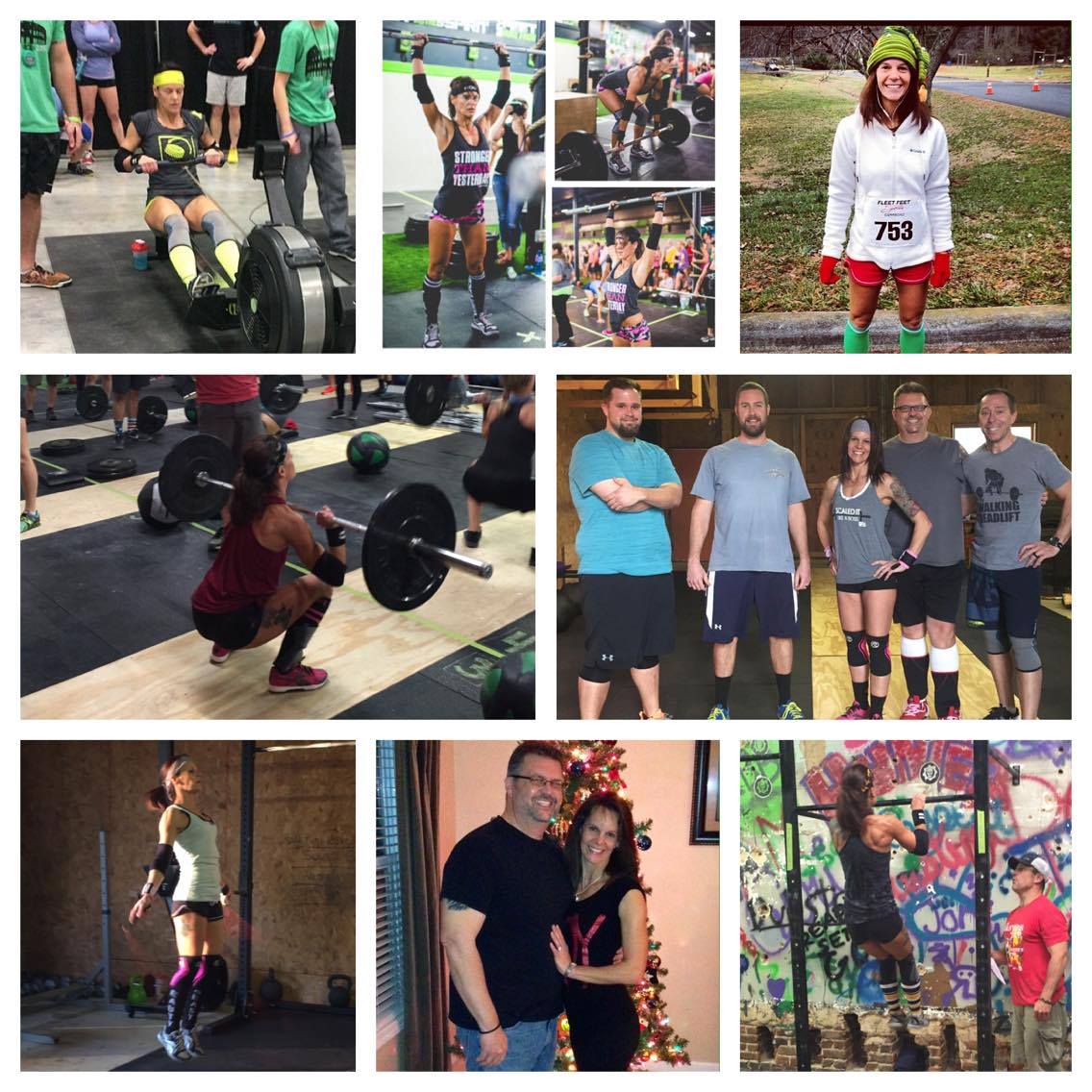
Without boring you to tears, let me just say I basically work on my “physique” …focusing on specific muscle tone-ness, ab/core, as well as cardio.
I still enjoy met-cons as I love utilizing all the fun things I learned with doing Crossfit, like kettle-bells and wall-balls, and even some weight-lifting. But I just don’t focus too much on a lot of weight. Instead I continually try to improve my technique in whatever movement I do.
Over the past few years, I’ve participated in several local Crossfit competitions, as well as a few 5k runs. This September I will be taking part in my first Spartan Sprint Race with my husband and three boys.
I recently earned my Personal Training Certification and my goal is to influence, inspire and help others achieve their fitness goals. I currently help a few friends at my gym, and am working on getting a neighborhood bootcamp class together.
Life is too short. And you are NEVER too old to look and feel your very best.
So what are you waiting for? Get out there! Be “stronger than yesterday.”
-Tina
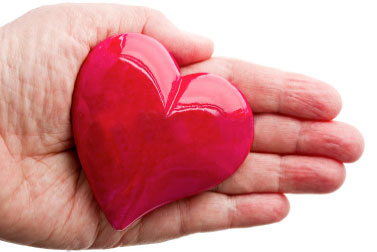
by Fit Women Staff
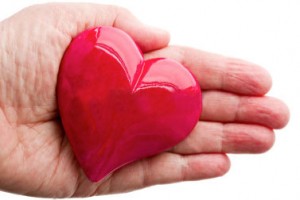 Last week, my 78 year old Mother had Open Heart Surgery unexpectedly after a heart attack that came seemingly without warning. Her heart attack only showed up as a burning sensation in her chest so she actually wasn’t sure what was happening to her because she had no idea she even had heart disease. Other than having high blood pressure and being on blood pressure medication, she was living a healthy lifestyle.
Last week, my 78 year old Mother had Open Heart Surgery unexpectedly after a heart attack that came seemingly without warning. Her heart attack only showed up as a burning sensation in her chest so she actually wasn’t sure what was happening to her because she had no idea she even had heart disease. Other than having high blood pressure and being on blood pressure medication, she was living a healthy lifestyle.
So what happened? And why aren’t women more aware of heart disease? From what I have learned it’s all about a lack of awareness and sometimes even denial.
“A recent national study conducted by the American Heart Association showed that fewer than 50% of American women know that heart disease is their leading killer.” – AMA website
“Heart Disease remains the number one killer of women in the U.S., and younger women are twice as likely to die after suffering a heart attack as men of the same age. – Vogue magazine (Nov 2011 issue)
Cardiovascular disease is the No. 1 cause of death in the United States and it claims the lives of almost 500 000 women each year. There is more awareness and media exposure for about Breast Cancer which claims the lives of about 30,000 women each year.
I have seen denial about health issues first hand with my own family. My mother admitted she ignored the warning signs and how her body was feeling. She thought being tired all of the time, having a hard time sleeping and shortness of breath were just “signs of aging”. Having lived a healthy holistic life she is “shocked” she has heart disease. Like a lot of women she thought she was doing everything right.
Nieca Goldberg, M.D. a cardiologist at NYU’s Langone Medical Center, says, “Women don’t have what I call the Hollywood heart attack that men have – severe chest pain, for instance. They might be tired. They might just feel uncomfortable.”

Denial is common in women with heart disease.
Surveys suggest such denial is common in women with heart disease.
Now after an emergency 5 Coronary Artery Bypass Surgery which saved her life, my mother is asking the big questions. Why did I get this and why didn’t I know I had heart disease? And as her daughter, I am asking those same questions too. Both of my parents now have had heart disease, a genetic predisposition could be one of the risk factors of heart disease.
But noted genetic researcher Dr. Robert Hegele, Heart and Stroke Foundation of Canada Lecturer at the Canadian Cardiovascular Congress 2009, says “When it comes to heart disease, lifestyle usually trumps genetics.”
Dr. Hegele’s work is unraveling the nature vs. nurture debate that has intrigued scientists for years. He says that for about five per cent of patients, the effect of genetics is so strong there is little they can do, but that 95 per cent of us can override our genes by following a healthy lifestyle.
“To be sure diabetes, a result of the obesity epidemic, factors heavily in the recent increase in the heart disease, but there has also been a devastating lapse in awareness, particularly among women. Studies show, for instance, that women today are much less likely to call 911 and more likely to delay going to the hospital than they were just 5 years ago.”
“And yet any hesitation”, notes Elsa- Grace V. Giardina, M.D., a cardiologist and the director of the Center for Women’s Health at Columbia University’s College of Physicians & Surgeons, only makes matters worse. “ When you finally do get to the hospital, there’s been a lot of damage.”
Plus there has been a spike in deaths among younger women in their 30’s and 40’s.
When a heart attack strikes a young woman, she is likely to suffer debilitating damage or die. In a study that looked at gender differences among heart attack victims, researchers found that heart attacks were far more likely to be deadly if the victim was female. In fact, when Dr. Viola Vaccarino and her colleagues looked only at patients under age 50, they found that twice as many women as men died in the days following a heart attack.
Part of the explanation for this frightening statistic is that young women with heart attacks often get either no treatment or they receive delayed care. Sometimes women, and sometimes their doctors, miss the attack because they don’t realize that the symptoms of a heart attack may vary with the patient’s gender, says Vaccarino, an assistant professor of epidemiology at the Yale School of Medicine.
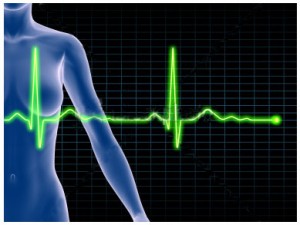
EKG Electrocardiogram
Compared to men, during a heart attack women are much more likely to experience back pain, indigestion and nausea and/or vomiting, rather than chest pain, as their symptoms.
But, while doctors are at a loss to explain why heart attacks occur in otherwise healthy young women, they have pinpointed a group who are at an elevated risk. Women who smoke, are obese, have diabetes and/or high blood pressure are more likely than others to have a heart attack.
My mother had high blood pressure as an elevated risk, but she didn’t smoke, wasn’t obese or have diabetes. Having never taken medications in her life, she is now on a smorgasbord of medicines including a blood thinner called Coumadin,.
The following symptoms could signal heart ills:
1. Angina (chest pain). Can also include back pain or deep aching and throbbing in the left or right bicep or forearm.
2. Breathlessness. Also may include waking up having difficulty catching one’s breath.
3. Clammy perspiration.
4. Dizziness. Unexplained lightheadedness, even blackouts.
5. Edema. Swelling, particularly of the ankles or lower legs.
6. Fluttering. Rapid heartbeats.
7. Gastric upset (or nausea).
8. Heavy fullness. Also may include pressure-like chest pain between breasts and radiating to left arm or shoulder.
If you are experiencing these symptoms please do not wait, contact a doctor immediately for your own safety.
Being aware of personal risk and treatment options can empower a woman to live a long and healthy life.

Heart Healthy Cooking
These top 6 Lifestyle Changes are your first line of defense against heart disease:
1. Stop smoking cigarettes and avoid secondhand tobacco smoke.
2. Get at least 30 minutes of physical activity each day. See CrossFit >>
3. Blood pressure is optimal at less than 120/80 mm Hg. If there’s a slight rise in pressure, the first line of self-defense is to improve your lifestyle habits.
4. Cholesterol levels are important for women to know. Total cholesterol optimally should be less than 200 mg/dL; LDL (bad cholesterol), less than 100 mg/dL; HDL (good cholesterol), more than 50 mg/dL; and triglycerides (a type of fat in the blood), less than 150 mg/dL.
5. Eat a heart-healthy diet that includes fruits, vegetables, grains, low-fat or nonfat dairy products, fish, legumes, and sources of protein low in saturated fat (such as, poultry, lean meats, and plant sources). Limit intake of trans fatty acids such as those found in hydrogenated oils.
6. Maintain a healthy weight, balance the calories you eat with the amount you use up each day. Diabetes (high blood sugar) is becoming more common in the United States. Unhealthy eating habits and gaining too much weight are leading causes of type II (acquired) diabetes.
Overwhelming evidence suggests that heart disease can be prevented in women. Every woman should know what her risk level is and her prevention goals and the best way to reach them.
Need more ideas for Cooking Healthy Meals, then check out: The Healthy Urban Kitchen Cookbook The Healthy Urban Kitchen is a simple, step by step system for shopping, cooking and eating the world’s healthiest foods. It was created for busy people who want to improve health, have more energy, and prevent disease.
Robb Wolf’s 30 Day Total Transformation
Do you want to…
Lose weight?
Feel better?
Have more energy?
Reduce inflammation and pain?
Reverse diseases like rheumatoid arthritis, ulcerative colitis, lupus, autism, diabetes, and obesity?
Look, feel, and perform at your best ever?
Get your 60-page Guide for just $25


by Fit Women Staff
For thousands of years, indigenous cultures worldwide have understood that cooked & fermented foods are more feeding & nourishing to the body than raw foods.
Raw foods are cleansing and detoxifying to the body because they are harder to digest. Whereas, cooking foods breaks down their cellular structure, making them easier to digest. Our ancestors developed methods to make foods more digestible through cooking and fermentation that have more nutritional value then many modern foods.
Asian cultures ferment kimchi (fermented cabbage), kefir, miso, sake, pickled ginger and shubat (fermented camel milk). India and the Middle East have fermented chutneys, various yogurts, and torshi (mixed vegetables). Europeans fermented sauerkraut, kefir, crème fraiche, and rakfisk (salted, fermented trout). In South America, kombucha, and cacao beans which must be fermented first before use. In the Pacific, they have poi (fermented, mashed taro root) and kanga pirau. And in the U.S., we used to ferment sauerkaut & make relish, pickling, & ketchup. My Austrian grandfather kept barrels of fermented pickles, sauerkaut & pigs parts in his cellar in upstate New York.
Today foods such as sauerkraut and pickles, contain no live enzymes and are poor substitutes produced quickly for mass consumption. Commercial sauerkraut and pickles, are preserved in vinegar instead of the traditional and naturally occurring lactic acid forming bacteria.. Unless the producer adds bacteria, store bought sauerkraut is usually pasteurized and void of taste and nutrients. Lactobacilli contribute to the protection of the body against infections and stimulate the immune system. Probiotics have become popular today because they add back into our digestive system those microflora that our gut needs to prevent allergies & infections.
To heal your digestive system, you can Buy Probiotic Enzymes or Make Real Fermented Foods.
or Make Real Fermented Foods.
The Top 10 Health Benefits of Fermented Foods
1. Fermented foods are instrumental in healing & restoring the balance of gut flora in our bodies. Lacto-fermented foods normalize the acidity of the stomach. In the not too distant past, people who ate traditional, whole foods diets ate this bacteria on a regular basis did not have a severe gut deficit that we do today.

Pickled Red Cabbage
2. The beneficial bacteria in fermented foods are very potent detoxifiers, capable of drawing out a wide range of toxins and heavy metals. Molecules in the bacteria grab hold of mercury, lead, aluminum, arsenic, and other toxins, which are then removed through stool. Fermentation removes phytic acid from grains, nuts and seeds, which otherwise would block mineral
absorption and lead to deficiencies. Eating improperly prepared grains is a major cause of
osteoporosis in our culture.
3. Lactobacilli converts starches and sugars in vegetables and fruits into lactic acid, a natural preservative that inhibits putrefication and also act as anantioxidant, and anti carcinogenic agent, reducing cancer precursors known as free radicals.
4. Sauerkraut contains large quantities of choline, a water soluble nutrient. Choline must be consumed through the diet in order for the body to remain healthy and it may lower the risk for breast cancer in women and also helps to lower blood pressure. Sauerkraut also contain acetylcholine, which reduces blood pressure, slows the rate of the heartbeat and promotes calmness and good sleep.
5. You only need to consume small amounts every day in a greater variety to get the optimum amount of microorganisms possible. Steer clear of pasteurized versions, as pasteurization will destroy many of the naturally occurring probiotics. Most of the “probiotic” yogurts you find in grocery store these days are not recommended. They’re pasteurized and they also typically contain added sugars, high fructose corn syrup, dyes, and artificial sweeteners.
Buy Probiotic Enzymes
6. Consuming traditionally fermented foods will also help you absorb more important nutrients such as vitamin K2, which is important for preventing arterial plaque buildup and heart disease. It also facilitates the synthesis of certain vitamins, such as vitamin C, and B12, which can only be produced in the presence of lactic bacteria.
7. Probiotics have been shown to help optimize your intestine’s immune system. With eighty percent of your immune system located in your digestive system, your gut is a major focal point on your way to maintaining optimal health. Buy Probiotic Enzymes
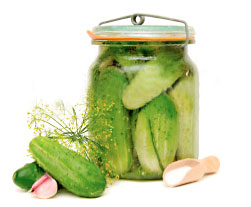
Pickled Cucumbers – Cultured Vegetables
8. Save money by eating real foods rather then supplements. Fermented foods can contain 100 times more probiotics than a supplement. A cost effective strategy would be to eat a small amount of fermented foods with each meal to replace some of the supplements you are now taking.
9. Aging decreases your body’s supply of enzymes, but fermented foods are rich in enzymes, and so can help offset this shortage. Eating an enzyme-rich diet reduces the stress on your pancreas, and therefore could reduce your risk of many different chronic diseases. Warding off enzyme depletion, can help you live a longer, healthier life.
10. Fermentation preserves food. Fermentation organisms produce alcohol, lactic acid and acetic acid, all “biopreservatives” that retain nutrients and prevent spoilage. Captain Cook conquered scurvy among his sailing crews by bringing large quantities of sauerkraut, which is very high in Vitamin C, on his lengthy voyages. Not a single sailor got scurvy and the last barrel of kraut was still perfectly preserved after 27 months.
More Resources on Fermented Foods:
Places to BUY Fermented Foods:
Buy Probiotic Enzymes


by Fit Women Staff
Our friend and fellow water person extraordinaire, Roz Savage, who is the First Woman To Row Solo Across the Pacific Ocean and has logged 11,000 miles, 3.5 million oar strokes, 352 days alone at sea,
has just been officially selected as an “Adventurer of the Year” by National Geographic.

Roz Savage arriving in Hawaii
Here is a message from Roz that she wanted me to pass along:
“I’d like to thank you for your support, which has undoubtedly contributed to my receiving this wonderful accolade. My boat and I may be the most visible part of the picture, but I couldn’t do what I do without the ocean of support from you and others like you, and so this title belongs as much to you as to me.”
“I see this as a vindication of the course that I plotted 6 years ago, when I chose to abandon my creature comforts to row across oceans, using my adventures to spread the message that we have to look after this Earth if we want it to look after us. When I look back over the years since I first set out across the Atlantic in 2005 as a nervous novice ocean rower, I am overwhelmed with gratitude for the people and places and incredible life experiences that have enriched my life while I have worked incessantly to make my vision a reality.”
“I have a favour to ask you – would you please vote for me? Out of the ten of us who have been chosen as “Adventurers of the Year”, one will be voted the “People’s Choice Adventurer”. Between now and January 15, people will be voting for their favourite adventurer.”

Roz Savage, Ocean Rower
“It would really be the icing on the cake if I won this additional title as well. Besides the prestige, it would give a real boost to my efforts to raise profile and funds as I prepare for the last two years of my ocean-rowing career: the Indian Ocean in 2011 and the North Atlantic in 2012.”
“The Indian Ocean – dubbed “EAT, PRAY, ROW” – starts around 31st March next year. I’ll need $50,000 to complete the row and am asking people to sponsor $10 per mile of the 5,000 mile trip. There’s more about this campaign at http://www.rozsavage.com/eat-pray-row/”
“My final “Homecoming Row” is in 2012, launching from New York, heading out past the Statue of Liberty and heading for London, ideally arriving just before the 2012 Olympics. More info at http://www.rozsavage.com/homecoming-row/.”
“I want to leverage these expeditions to the max, reaching as many people as possible with my environmental message. The more resources I have at my disposal, in terms of (wo)manpower, budget, and media exposure, the more effective I will be in my mission.”
“I would be really grateful for your vote, AND for you to forward this message to your network of friends, family, colleagues, newsletters – whatever connections you have at your disposal. Please take a moment to think of as many people that you know who are interested in adventure, athletic endeavour, environmental issues, personal growth, rowing, or simply enjoy an inspiring success story – and ask them to vote for me.”
“Vote for Roz Savage”
Many thanks!
And warmest green wishes
Roz xxx
More on Roz’s website >>




 Last week, my 78 year old Mother had
Last week, my 78 year old Mother had 







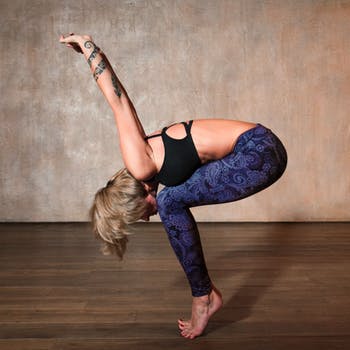 What should you believe these days when everywhere you look there are contradictions in every nutrition & health book and article you read? Your Mom tells you one thing, your friend tells you another & then you read something else in a health magazine. Most advice these days seems to just contradict the other.
What should you believe these days when everywhere you look there are contradictions in every nutrition & health book and article you read? Your Mom tells you one thing, your friend tells you another & then you read something else in a health magazine. Most advice these days seems to just contradict the other.